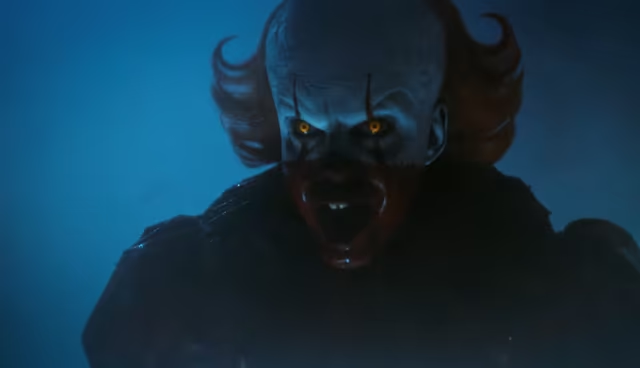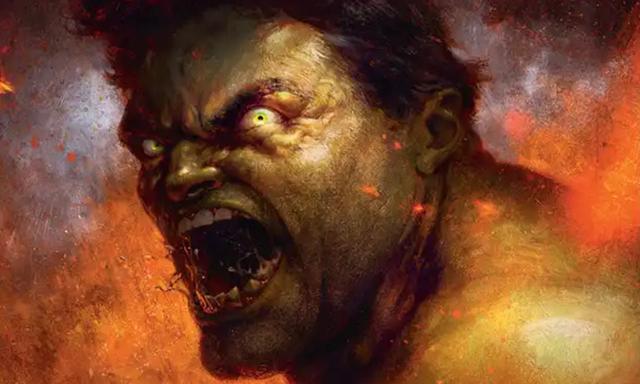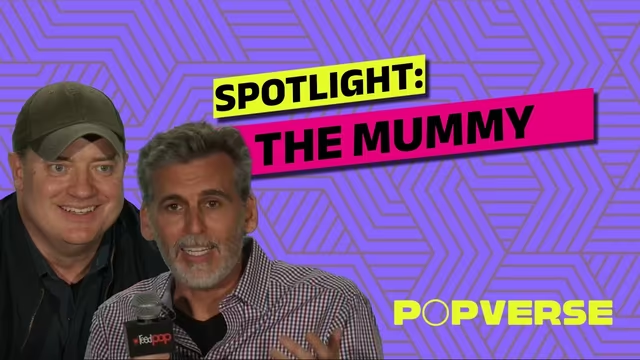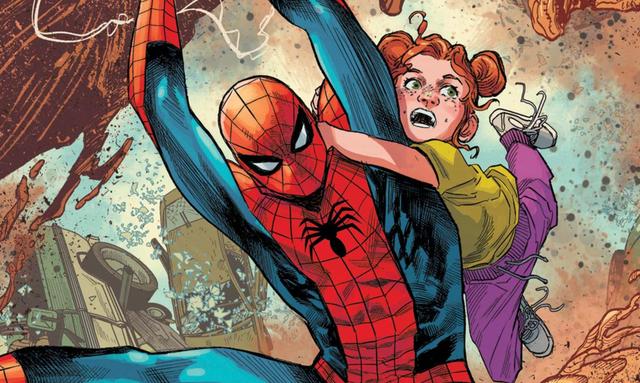If you click on a link and make a purchase we may receive a small commission. Read our editorial policy.
A Batman for the people: Why the Dark Knight will never be a working class hero
While Batman is the most recognizable human superhero in the DCU, he is far from the Justice League’s most relatable

With the DC Universe populated by an ever-growing number of literal gods and monsters, it takes a whole lot for its unpowered human heroes to stand among their magical and cosmic counterparts. The most prominent of these is Batman, who not only stands as the most iconic superhero out of Gotham City but often plays a major role on the Justice League too, working closely with teammates who exist to defy the impossible on a regular basis.
However, while Batman might be the most human hero in the DCU, he is far from the best suited to represent humanity alongside the super-powered pantheon of heroes and villains constantly battling for control.
Spoilers for Danger Street #5 below.
The DC Black Label maxi-series Danger Street by Tom King and Jorge Fornés provides multiple perspectives of the DCU through more obscure heroes like Warlord, Starman, and the Creeper. The latter is depicted both in his manic vigilante state and as Gotham television pundit Jack Ryder, who uses his platform to attack the efficacy and public’s willingness to place its trust in superheroes. While dedicating his program to a piece on the Outsiders, which earns the ire of Batman. Confronting Ryder and warning him to end his coverage of the Outsiders, the Dark Knight is dressed down by Ryder who observes that Batman is more of a beloved figure for social elites looking for a defender of the status quo than a working class hero.
And for all of Ryder’s contradictory swarminess, skewering Batman’s elite reputation while wearing a tailored suit and smoking an expensive cigar, there's definitely a fair bit of truth in his assessment. Batman often stands as the last line of defense in preventing Gotham from being completely overrun by supervillains but, most nights, he does oversee the city from its rooftops, stopping crimes often committed by the financially impoverished population on those that are nominally better off than them.
Ryder goes as far to accuse Batman of judging the populace he protects – which comes off as hypocritical from someone who regularly uses a television show as a popular pulpit – but Batman’s judgmental nature of even his closest colleagues adds substance to that stance.
The case for a billionaire Batman

Bruce Wayne comes from old money, with his family among the founders of Gotham centuries ago, but what distinguishes Bruce is that he is one of the few affluent figures in the city presumably using his wealth as a force for good. Simply put, there are some solutions that even the hardest punch from Batman can’t solve, and Bruce uses his wealth in an active attempt to ameliorate conditions across Gotham.
Scott Snyder and Greg Capullo’s Batman run started with Bruce publicly unveiling his plans of an ambitious revamp of the city to usher in its planned revitalization. The conclusion of “Bruce Wayne: Fugitive” has Bruce recalling the good that his civilian persona is capable of after he has his name cleared, rediscovering that saving Gotham is a two-fronted strategy that employs both sides of his life.
Tom Taylor and Bruno Redondo’s run on Nightwing presents one of the most salient examples of a billionaire superhero using their finances for the greater good. Uncomfortable with his newly minted billionaire status, Dick Grayson utilizes his funding to provide low-income housing, updating Bludhaven’s infrastructure, and cleaning up the municipal corruption around his city.
More explicitly detailed than Bruce’s visible contributions, Dick is a billionaire with a conscience, though Bruce likely provided some inspiration for his old protege through his own ambitious philanthropies that have been seen over the years across Batman’s publishing history.
More to the point, Batman comics have a long legacy of presenting more nefarious billionaires that exploit those around them to further build their wealth and power. Roman Sionis, Rupert Thorne, Thomas Elliot, and Oswald Cobblepot are all depicted as Gotham-based scions with varying levels of affluence who sow corruption and graft to manipulate others to serve them.
The biggest answer to the Wayne family is the Court of Owls, an organization depicted as having even deeper, more clandestine roots into Gotham and have secretly steered the course of the city to their own ends for centuries, with just as much wealth and influence to boot to challenge the Dark Knight’s hold on the city. Compared to these seedy types, Bruce Wayne’s billionaire playboy status practically seems like a sainthood.
Attempts to bring Batman back to the streets

Over the years, there have been multiple attempts to temporarily deflate the Wayne family’s finances to make Batman a scrappier and more resourceful character, proving that his competence is not implicitly connected to his pocketbook. In the modern continuity, the first major instance of this is in the 1999 crossover event “No Man’s Land,” with Gotham ravaged by a massive earthquake and denied relief from the federal government. With his city in ruins, Bruce’s finances were effectively useless, leading him to take more radical tactics to restore order.
The subsequent 2002 crossover event “Bruce Wayne: Fugitive” provided a different means to sever Batman’s funding, with Bruce framed for the murder of his girlfriend and forced to go on the run to clear his name. With Bruce a wanted man, Batman couldn’t tap into his alter ego’s finances, forcing him to think on his feet to save the day.
Snyder’s Batman work featured Bruce losing access to his funds on two separate occasions. The first instance occurred during the storyline “Zero Year,” with the Riddler flooding Gotham, forcing Batman to scrounge for his own supplies and vehicles to retake the city. A longer lasting incident took place in the year-long weekly series Batman Eternal, with the federal government seizing Wayne Enterprises’ assets after every aspect of Bruce’s life was targeted by Hush and Lincoln March.
Most recently, Bruce has fallen into a financial rut during James Tynion IV and Jorge Jiménez’s 2021 crossover event “Joker War.” Aware of Bruce’s identity as Batman, the Joker manipulated Lucius Fox into granting him access to the Wayne family’s finances and Batman’s secret armory to unleash upon Gotham. While the Joker was defeated and Gotham was saved, Bruce’s fortune is nowhere near as large as it had been, with Bruce now living in a nondescript brownstone in the city rather than occupying his ancestral home at stately Wayne Manor.
The rise of Green Arrow

Ironically, Batman isn’t even the only human prominently serving on the Justice League, with Green Arrow perhaps providing a better portrait for humanity on the team than the Caped Crusader. Though Oliver Queen began his crimefighting career as a billionaire, complete with his own secret lair and superhero-themed car, he lost most of his fortune to become a scrappier, more vocally socially conscious hero than Batman has ever been. Though Queen’s fortune would eventually be restored (And is currently larger than Bruce’s), that firebrand aspect to his personality hasn’t visibly diminished as his financial standing was positively reversed.
Compared to the cold, calculating Batman, Green Arrow is the more emotionally open and relatable character. We see numerous personal shortcomings committed by Ollie, from his absolute trainwreck of a love life to his handling of his sidekicks and his own children. Ollie is a much more flawed character than Bruce and that makes him more identifiable and empathetic than the always-prepared-for-anything Dark Knight.
Ultimately, Batman coming from money is an aspect of the character that has not only been around since his introduction in 1939 but has surfaced in virtually every major depiction of the superhero on page and screen for generations. In a world where the wealth divide is becoming increasingly pronounced and impossible to ignore, this raises moral questions about the character even beyond Danger Street’s pointed indictment of the Dark Knight and his lack of relatability.
Money doesn’t necessarily make Bruce Batman but it sure does help finance all those wonderful toys. The appreciation of Batman’s finances level really comes down to if readers see him as a wish-fulfillment character or someone more self-made – both arguments have their own valid points – but the Dark Knight definitely is far from the biggest hero for the people in the DCU.
Danger Street #5 is written by Tom King, illustrated by Jorge Fornés, colored by Dave Stewart, and lettered by Clayton Cowles. The DC Black Label maxi-series continues with Danger Street #6, on sale May 9.
Follow Popverse for upcoming event coverage and news
Find out how we conduct our review by reading our review policy
Let Popverse be your tour guide through the wilderness of pop culture
Sign in and let us help you find your new favorite thing.
















Comments
Want to join the discussion? Please activate your account first.
Visit Reedpop ID if you need to resend the confirmation email.